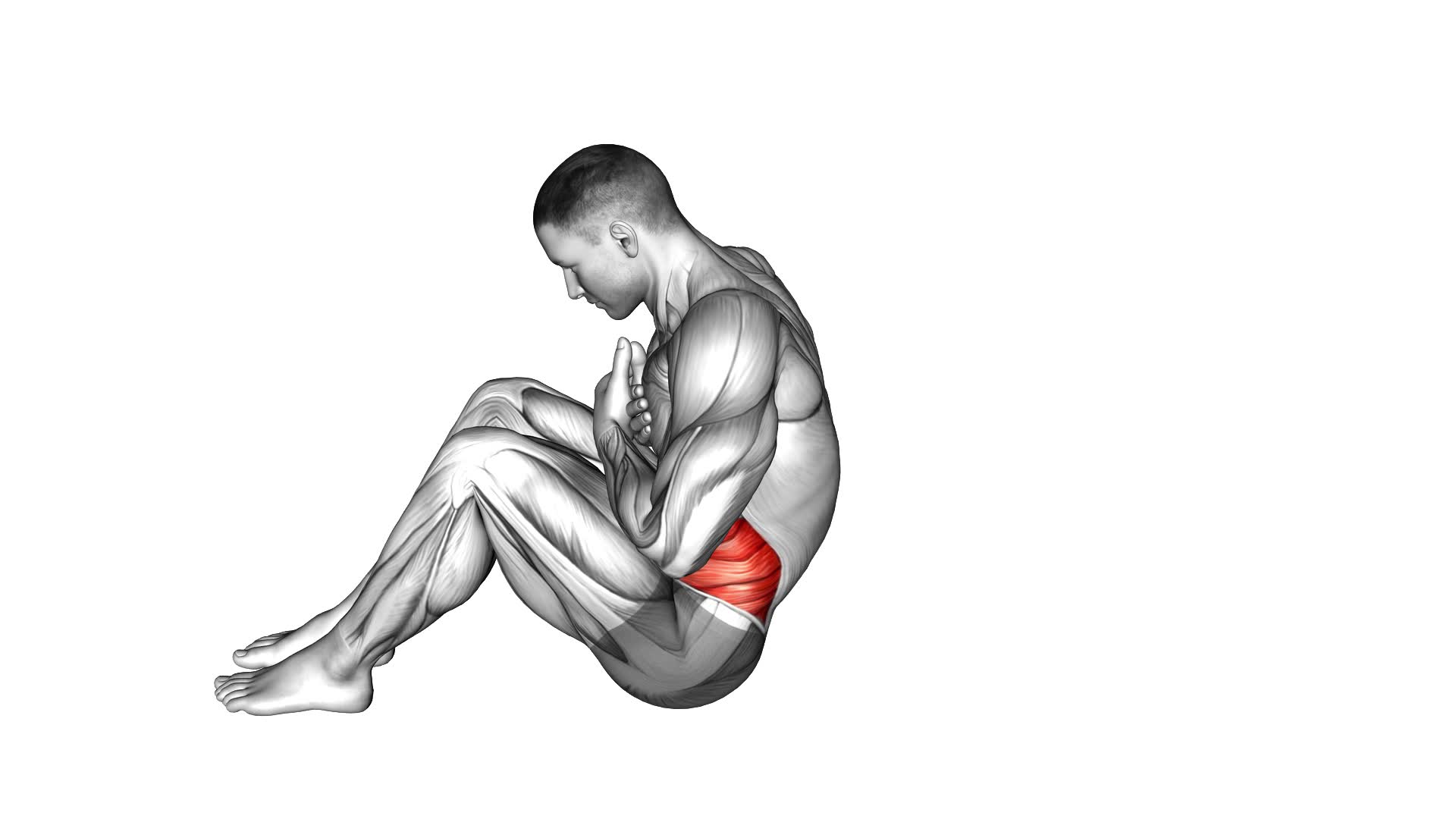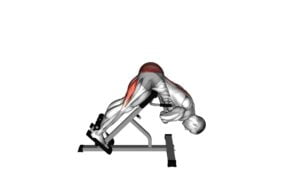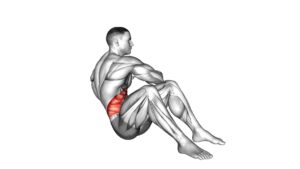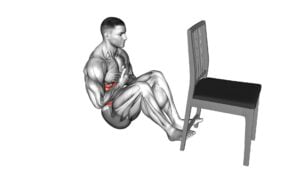Sit-Up With Arms on Chest – Video Exercise Guide & Tips

Are you looking for a challenging exercise to strengthen your core? Look no further than the Sit-Up With Arms on Chest!
Watch This Exercise Video
This exercise targets your abdominal muscles and improves overall core stability.
In this video exercise guide, we'll show you the proper form and technique, common mistakes to avoid, variations to spice up your workout, and tips for increasing intensity.
Get ready to take your core training to the next level with this effective and efficient exercise.
Key Takeaways
- The sit-up with arms on chest targets abdominal muscles and improves core stability and strength.
- Proper form and technique, such as engaging the core and avoiding momentum or strain on the lower back, are important for maximizing the benefits of the exercise.
- Core engagement is crucial for overall body stability, posture, and functional strength, and it enhances the effectiveness of sit-ups.
- There are variations and ways to increase intensity, such as weighted sit-ups, resistance bands, and progressive overload techniques, to challenge different muscle groups and promote strength and muscle growth.
Benefits of the Sit-Up With Arms on Chest
The Sit-Up With Arms on Chest provides significant core strength benefits. This exercise targets the abdominal muscles, specifically the rectus abdominis, obliques, and transverse abdominis. By engaging these muscles, you can improve your overall core stability and strength.
One of the key benefits of the Sit-Up With Arms on Chest is that it helps to improve proper breathing technique. As you perform the sit-up motion, you're required to exhale on the way up and inhale on the way down. This controlled breathing pattern not only helps to engage the core muscles more effectively but also promotes better oxygenation throughout the body.
While the Sit-Up With Arms on Chest is an effective exercise, it's always good to have alternative exercises to keep your workouts diverse and challenging. Some alternative exercises that target the same core muscles include the Russian twist, bicycle crunches, and plank variations. These exercises can be incorporated into your routine to provide variety and prevent boredom.
Proper Form and Technique
To ensure proper form and technique while performing the sit-up with arms on chest, it's crucial to engage your core throughout the exercise. This will help you maintain stability and prevent strain on your lower back.
Avoid common form mistakes such as using momentum or pulling on your neck, as these can lead to ineffective results and potential injury.
Core Engagement Importance
Engage your core by maintaining proper form and technique during the sit-up exercise with arms on chest. Proper core engagement is crucial for the effectiveness of any core exercise, including sit-ups.
Here are three reasons why core strength is important and why effective core exercises are essential:
- Improved stability: A strong core provides stability to your entire body, helping you maintain balance and prevent injuries during physical activities.
- Enhanced posture: A strong core helps you maintain proper alignment and posture, reducing the risk of back pain and improving overall body mechanics.
- Increased functional strength: A strong core improves your ability to perform daily activities, such as lifting, bending, and twisting, with ease and efficiency.
Maintaining proper form and technique during sit-ups ensures that you engage your core effectively, maximizing the benefits of the exercise.
Now, let's explore some common form mistakes to avoid when performing sit-ups.
Common Form Mistakes
When performing sit-ups with arms on chest, it's important to be mindful of common form mistakes to ensure proper technique and maximize the effectiveness of the exercise. Injury prevention should be a priority when doing sit-ups, so it's crucial to avoid these common mistakes.
One common mistake is using momentum instead of engaging the core muscles. This can lead to strain on the lower back. To prevent this, focus on using your abdominal muscles to lift your upper body rather than relying on swinging your arms.
Another mistake is holding your breath during the exercise. Proper breathing techniques involve exhaling as you lift your upper body and inhaling as you lower it back down.
Common Mistakes to Avoid
One common mistake to avoid during the sit-up with arms on chest exercise is allowing your lower back to lift off the ground. This can put unnecessary strain on your spine and decrease the effectiveness of the exercise.
To ensure proper technique and maximize your results, here are three important points to keep in mind:
- Engage your core: It's crucial to maintain a strong and stable core throughout the movement. This means keeping your abdominal muscles contracted and your lower back pressed firmly against the ground. Failing to do so can lead to improper form and potential injury.
- Control the movement: Avoid using momentum to power through the sit-up. Instead, focus on a slow and controlled motion, using your core muscles to lift your upper body off the ground. This will engage the targeted muscles more effectively and reduce the risk of straining other areas.
- Avoid pulling on your neck: Many people make the mistake of pulling on their neck with their hands during the sit-up. This not only puts strain on the neck muscles but also takes away from the engagement of the abdominal muscles. Instead, keep your hands gently placed on your chest and use your core to lift your upper body.
Variations to Spice Up Your Workout
To add variety and intensity to your workout, try incorporating different variations of the sit-up with arms on chest exercise. By changing up the way you perform this exercise, you can challenge different muscle groups and keep your routine fresh and engaging. Here are a few variations to spice up your workout:
- Weighted Sit-Ups: Hold a dumbbell or a weight plate against your chest as you perform the sit-up. This added resistance will increase the challenge level and help build strength in your core.
- Russian Twists: Start in the sit-up position with your arms crossed over your chest. As you come up, twist your torso to one side and touch the ground with your opposite hand. Return to the starting position and repeat on the other side. This variation targets your obliques and improves rotational strength.
- Bicycle Crunches: Lie on your back and bring your knees towards your chest. As you crunch up, extend one leg out and twist your upper body to bring the opposite elbow towards the knee. Alternate sides in a cycling motion. This exercise not only works your core but also engages your hip flexors and lower abs.
Incorporating these variations into your sit-up routine won't only add variety but also allow you to challenge different muscle groups and take your workout to the next level. Remember to start with the variation that matches your fitness level and gradually progress as you get stronger.
Tips for Increasing Intensity
To increase the intensity of your sit-ups, there are several effective strategies you can try.
First, consider incorporating weighted sit-up variations by holding a weight plate or dumbbell against your chest. This added resistance will challenge your core muscles even more.
Additionally, using resistance bands can provide constant tension throughout the movement, making your sit-ups more challenging.
Lastly, don't forget about progressive overload techniques, such as increasing the number of repetitions or sets, or decreasing the rest time between sets, to continuously push your limits and keep progressing.
Weighted Sit-Up Variations
To increase the intensity of your sit-ups, try incorporating weighted variations using a dumbbell or medicine ball. Adding resistance to your sit-up routine can help to challenge your core muscles even further and promote increased strength and muscle growth.
Here are three weighted sit-up variations you can try:
- Dumbbell Sit-Up: Hold a dumbbell against your chest as you perform sit-ups, keeping your arms extended and parallel to the ground.
- Medicine Ball Sit-Up: Hold a medicine ball against your chest as you perform sit-ups, keeping your arms wrapped around the ball for added stability and resistance.
- Overhead Weighted Sit-Up: Hold a dumbbell or medicine ball overhead as you perform sit-ups, keeping your arms fully extended throughout the movement.
Incorporating Resistance Bands
To further increase the intensity of your sit-ups, incorporate resistance bands into your routine for added challenge and muscle activation.
Resistance bands are a versatile and portable tool that can be used to modify your sit-up exercise. One way to incorporate resistance bands is by wrapping them around your feet and holding the ends in your hands while performing sit-ups. This adds resistance to your movement, making your core muscles work harder.
Another modification is to anchor the resistance band to a stable object and hold onto the handles while performing sit-ups. This creates a pulling force that engages your core muscles even more.
Progressive Overload Techniques
To increase the intensity of your sit-up exercise, try incorporating progressive overload techniques to challenge your core muscles even more. Here are three advanced techniques you can use to take your sit-ups to the next level:
- Weighted Sit-Ups: Hold a weight plate or dumbbell against your chest while performing sit-ups. This added resistance increases the load on your core muscles, making them work harder.
- Decline Sit-Ups: Perform sit-ups on a decline bench with your head lower than your feet. This position increases the difficulty by placing more emphasis on your upper abdominal muscles.
- Russian Twists: After completing a sit-up, twist your torso to one side and touch the ground with your hands. Alternate sides with each rep. This exercise targets your oblique muscles and adds an extra challenge to your sit-up routine.
Incorporating overload progression and advanced techniques into your sit-up routine will help you continuously challenge your core muscles and achieve greater strength and definition.
Safety Precautions and Modifications
Make sure you use proper form and listen to your body to avoid injury while performing the Sit-Up With Arms on Chest exercise. Safety modifications and injury prevention are crucial when engaging in any physical activity. Here are some tips to help you stay safe and minimize the risk of injury during this exercise.
Firstly, it's important to have a stable surface to perform the sit-up on. Choose a flat and non-slippery surface to prevent any accidental slips or falls. Additionally, make sure you have enough space around you to perform the exercise without any obstructions.
When performing the sit-up, keep your core engaged and your neck in a neutral position. Avoid straining your neck by placing your hands gently on your chest, rather than pulling on your head. This will help to prevent any strain or injury to your neck and upper back.
If you have any pre-existing injuries or conditions that may affect your ability to perform the sit-up, it's important to modify the exercise accordingly. You can start by performing the sit-up with a smaller range of motion or with the assistance of a stability ball. Consulting with a qualified fitness professional can also provide guidance on modifications specific to your needs.
Remember, the key to injury prevention is to listen to your body. If you experience any pain or discomfort during the exercise, stop immediately and seek guidance from a healthcare professional.
Frequently Asked Questions
How Many Calories Does the Sit-Up With Arms on Chest Burn?
The sit-up with arms on chest is an effective exercise for calorie burning. It engages your abdominal muscles and helps strengthen your core.
The number of calories burned during this exercise depends on various factors like your body weight, intensity, and duration.
To increase calorie burning effectiveness, you can try variations and modifications such as adding weight or performing the exercise on an incline.
Always consult a fitness professional for personalized advice.
Can the Sit-Up With Arms on Chest Help in Reducing Belly Fat?
The sit-up with arms on chest is a great exercise for toning your abdominal muscles and strengthening your core. It can definitely help in reducing belly fat when combined with a balanced diet and regular exercise routine.
Remember to use proper breathing techniques during the sit-up to maximize its effectiveness and avoid any unnecessary strain. Additionally, it's important to take safety precautions by maintaining proper form and listening to your body's limits to prevent any injuries.
How Often Should the Sit-Up With Arms on Chest Be Performed to See Results?
To see results from the sit-up with arms on chest, it's important to perform it regularly. Consistency is key. Aim to do this exercise at least three to four times a week.
Are There Any Specific Breathing Techniques to Follow While Doing the Sit-Up With Arms on Chest?
When performing the sit-up with arms on chest, it's important to focus on your breathing techniques. Proper form and breathing can help you get the most out of this exercise.
As you sit up, exhale and engage your core muscles. Inhale as you lower your body back down to the starting position.
This controlled breathing pattern will help you maintain stability and maximize the effectiveness of the sit-up with arms on chest.
Can the Sit-Up With Arms on Chest Be Harmful for Individuals With Lower Back Pain?
Doing sit-ups with arms on your chest can be harmful for individuals with lower back pain. This exercise puts strain on your lower back, which can exacerbate your pain.
It's important to modify the sit-up by using alternative core exercises that target your abs without putting stress on your lower back. Some alternatives include planks, bird dogs, and glute bridges.
These exercises can help strengthen your core without causing further discomfort.
Conclusion
Incorporating the sit-up with arms on chest into your workout routine can offer numerous benefits. This exercise is particularly effective for strengthening your core muscles and improving your posture.
To ensure that you get the most out of this exercise, it is important to maintain proper form and technique. This includes keeping your back straight, engaging your core muscles, and using your abdominal strength to lift your upper body off the ground.
It is also important to avoid common mistakes that can diminish the effectiveness of the exercise. These include pulling on your neck with your hands, using momentum to lift your body, or neglecting to engage your core muscles.
To keep your sit-up routine challenging and prevent plateaus, consider adding variations to your routine. This can include performing the exercise on an incline or decline bench, using a stability ball, or incorporating twisting motions to work your oblique muscles.
Remember to gradually increase the intensity of your sit-up workout over time. This can be done by increasing the number of repetitions or adding weights to your routine. However, always listen to your body and make modifications as needed to prioritize safety.
By following these tips and incorporating the sit-up with arms on chest into your workout routine, you can take your core workout to the next level and achieve your fitness goals.

Author
Years ago, the spark of my life’s passion ignited in my mind the moment I stepped into the local gym for the first time. The inaugural bead of perspiration, the initial endeavor, the very first surge of endorphins, and a sense of pride that washed over me post-workout marked the beginning of my deep-seated interest in strength sports, fitness, and sports nutrition. This very curiosity blossomed rapidly into a profound fascination, propelling me to earn a Master’s degree in Physical Education from the Academy of Physical Education in Krakow, followed by a Sports Manager diploma from the Jagiellonian University. My journey of growth led me to gain more specialized qualifications, such as being a certified personal trainer with a focus on sports dietetics, a lifeguard, and an instructor for wellness and corrective gymnastics. Theoretical knowledge paired seamlessly with practical experience, reinforcing my belief that the transformation of individuals under my guidance was also a reflection of my personal growth. This belief holds true even today. Each day, I strive to push the boundaries and explore new realms. These realms gently elevate me to greater heights. The unique combination of passion for my field and the continuous quest for growth fuels my drive to break new ground.







